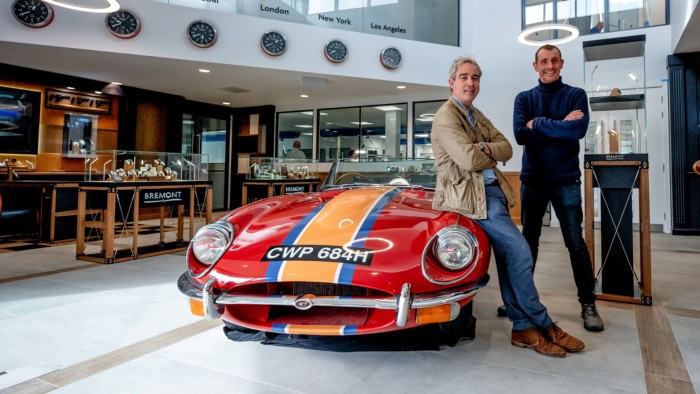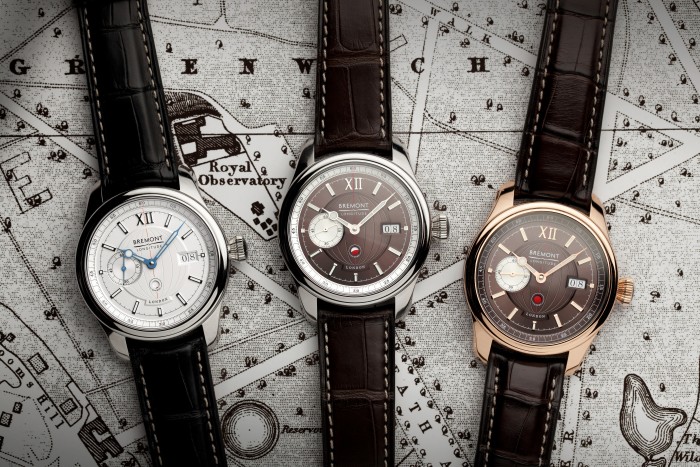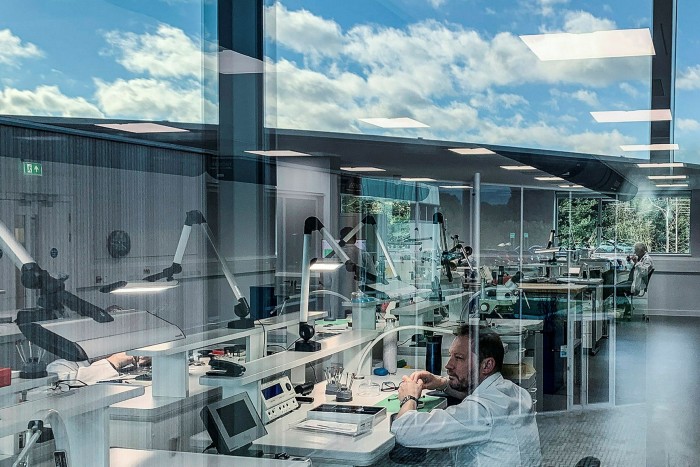Bremont movement helps solidify British watchmaking credentials

Roula Khalaf, Editor of the FT, selects her favourite stories in this weekly newsletter.
Ever since the opening of its £20m facility in Henley-on-Thames earlier this year, British watch brand Bremont has claimed it is on the cusp of returning industrial-scale watch manufacturing to the UK. But when its two founders, brothers Giles and Nick English, announced that they had developed their own proprietary watch movement late last month, they knew that they had been here before.
In 2014, Bremont launched a movement “designed and developed in Britain”, except that it was not: it was made by specialist Swiss movement manufacturer La-Joux Perret. “We saw what a lot of Swiss brands were doing, we [did] exactly the same, we did a lot of work and invested a lot of money — but we called it ‘in-house’ and got shot down for it,” says Giles English, ruefully.
A few years later, Bremont tried again, by announcing that it was working with Stephen McDonnell, a British watchmaker and movement designer, on a new calibre, or mechanism. But the result was far too expensive to be scalable for a brand such as Bremont. “I think, if we were ever to put that into a watch, it would have to be a £10,000-£15,000 watch,” says Giles. “Ultimately, we want this movement going into a £4,000 watch. That was always our target.”
Achieving that goal involves balancing three sets of considerations, he explains. “You need an engineering head, you need a design head, and you need a business head to make that work. It’s very easy to get led down one of those routes but they all have to have equal attention paid to them.”
Now, with the new ENG300 series of movements, they feel that have got it right and they are taking no chances on describing it as ‘in-house’. “We are never using that term again; this is a manufactured movement,” says Giles.
The first execution of this new movement is found on Bremont’s limited edition Longitude watch, out next month, which contains brass taken from the Greenwich meridian line, with its price ranging from £14,995 to £21,995 depending on the model.

It is powered by a mechanism based on one created by Swiss movement maker THE+, which Bremont has extensively re-engineered at its rural Oxfordshire manufacturing base to create a unique calibre.
The Longitude watch is the first in what Bremont hopes will be a long line of models that will feature versions of the new movement. Nick English has high hopes for a revival of British watchmaking on a scale not seen since Smiths Industries shut down its mighty Anglo-Celtic Watch Company in 1980. The 35,000 sq ft Bremont facility, which opened in March, has the capacity to produce 50,000 watches annually.
“We’ve worked with Swiss firm THE+ to buy the base calibre rights,” says Giles. “We’ve changed [the movement] massively,” to the point that 80 per cent of it is now Bremont’s design.

However, the brothers’ biggest boast is that “we are manufacturing that movement in Henley-on-Thames and not a single person could question that in any way. We’ve invested tens of millions to be able to do that.”
Giles estimates that each movement costs two to two-and-a-half times the equivalent from Swiss manufacturers Sellita or ETA, but he argues it is worth it. “You’re getting a silicon escapement, with four screws on the balance wheel instead of standard lever setting, you have 65 hours’ power reserve, antimagnetic properties and an excellent finish. We have 16 different variations of that movement, so we can have sub dial, centre seconds, power reserve, big date . . . all these different iterations. And it is very easy for us to service, thanks to the way it’s designed with just three screws on the main bridge to effectively dismantle the movement. There’s no point coming out with a movement that is so complicated that you need full-on watchmakers to service it. This can be serviced by technicians.”
And, given the logistical susceptibilities of the world transport system that have been exposed by the pandemic and, in the UK, by Brexit, the ability to offer servicing in the market rather than needing to ship back to the headquarters seems more attractive than ever.
Bremont has also set up an on-site system that will go live next year and which Giles claims is superior to its Swiss equivalents. “We’re testing finished movement with the rotor on, and final dial,” he says, comparing it with the Swiss equivalent chronometer testing, “which is done with a test dial, test hands, and with no rotor on”.
All this comes at a cost. Giles estimates that, on top of the cost of the new manufacturing headquarters, an additional £8m has been spent bringing this movement into production: an investment that includes the most up-to-date five axis milling machines, one in situ, and one on order.
“What’s lovely about these five axis machines is that they’re designed for watch components so they’re really small machines, as opposed to our big DMG Mori machines,” he says. “They’re designed for doing car parts, yet we’re using them for watch components.” But operating new machinery means sending staff to Switzerland for six months to learn how to set up and use the new machines, which is yet another cost.
Luckily, the brand has what Giles calls “very supportive long-term investors, individuals rather than venture capitalists. If you want to make quick money you would not invest in Bremont, but if you want to create a legacy brand that will be here in 30 years then you would.”
Comments